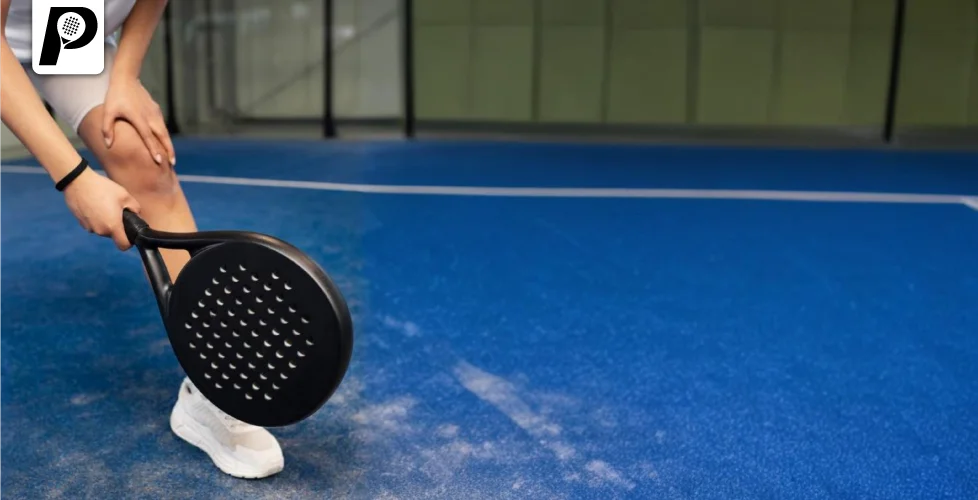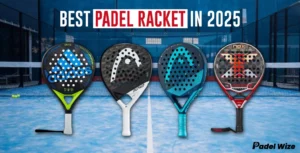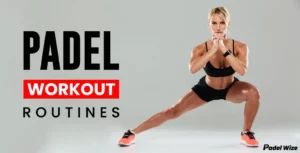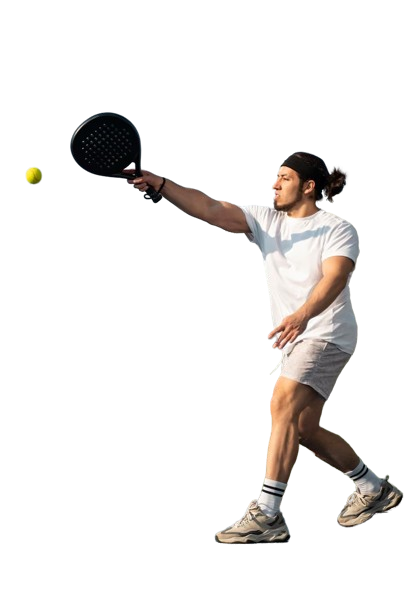For many racquet sport enthusiasts, the right grip and overgrips are more than just accessories—they are vital components that directly impact performance and comfort on the court. Whether you’re a tennis, badminton, or squash player, mastering your grip and understanding how to choose the ideal overgrip can elevate your game, providing you with better control, increased comfort, and reduced risk of injury. In this expanded guide, we’ll explore everything you need to know about selecting and maintaining grips and overgrips, tailored to different player needs, playing conditions, and levels.
Read more: Padel Smash Game: Essential Equipment and Gear Guide
Grips and Overgrips: The Basics
Before diving into selection, it’s essential to understand the fundamental differences between a grip and an overgrip.
Grip: The base layer on the handle of a racquet, often thicker and permanently affixed to the handle. It directly influences the size and feel of the racquet in your hand, giving you a stable foundation. Base grips are designed for durability and can withstand the rigors of repeated play, but over time, they may lose their tackiness or comfort, which is why overgrips are often used.
Overgrip: A thinner, replaceable layer wrapped over the base grip to enhance feel, absorb sweat, and provide a fresh grip without affecting the underlying structure. Overgrips are easier to replace, making them a cost-effective way to maintain grip freshness and performance without changing the racquet handle’s core dimensions.
Read more: Padel Club Tournaments: How to Prepare and What to Expect
Types of Grips: Finding the Best Base Grip for You
The type of grip you choose can affect how the racquet feels and responds in your hand. Base grips fall into a few main categories:
Leather Grip
Known for its firmness and durability, leather grips offer a raw, tactile feel that gives direct feedback from the racquet. Commonly used by advanced players who prefer a sturdy, no-slip grip, leather grips are often paired with an overgrip to reduce slipperiness and enhance comfort. Leather grips tend to absorb less moisture, so they’re best for players who want minimal cushioning.
Synthetic Grip
Synthetic grips are popular due to their versatility and comfort. Made from softer materials, they provide a balance between comfort and durability. Synthetic grips often include features like extra cushioning or moisture-wicking properties, making them more suitable for players looking for comfort during extended sessions. They are more forgiving on the hands compared to leather grips and are preferred by players who need to reduce impact and vibration.
Cushioned Grip
These grips are designed to provide extra padding to absorb shocks and vibrations. Often thicker than other grips, cushioned grips are helpful for players prone to joint discomfort or fatigue. They offer a softer feel, which is particularly beneficial for beginners or players who spend long hours on the court.
Read more: How Nox Padel Innovates in Padel Equipment and Apparel
Types of Overgrips: Choosing the Perfect Overgrip for Your Play
Overgrips are available in a wide range of types to suit different playing styles and conditions:
Tacky Overgrips
Tacky overgrips are known for their stickiness, making it easier to hold onto the racquet even in humid or sweaty conditions. They are ideal for players who prefer a secure, slip-free grip that allows for firm control. Tacky grips are a popular choice for players in high-temperature or humid environments.
Dry Overgrips
Dry overgrips are designed for optimal sweat absorption. Made from moisture-wicking materials, they quickly soak up perspiration, helping maintain control during intense play. They are often the preferred choice for players with sweaty hands or those playing in hot climates.
Thin Overgrips
Thin overgrips are minimalist and provide a close feel to the racquet handle. They offer a slight enhancement without drastically increasing the grip size, which makes them popular among advanced players who value a precise connection with their racquet. They don’t absorb as much shock, so they are ideal for players who don’t need additional cushioning.
Cushioned Overgrips
These overgrips offer added padding for players who want extra shock absorption and comfort. They’re especially beneficial for beginners or recreational players who play longer games or need extra support for sensitive hands.
Read more: How to Improve Your Game with the Right Padel Racquet
How to Choose the Right Grip Size
Selecting the correct grip size is crucial for comfort and performance. A grip that’s too large or small can lead to blisters, hand strain, and reduced control, so it’s essential to get this right.
Measure Your Hand: Use a ruler to measure the length from the tip of your ring finger to the second crease in your palm. This measurement roughly corresponds to the ideal grip circumference for your hand.
Finger Test: When holding the racquet with a relaxed grip, place your index finger of the opposite hand between the palm and the ring finger. If your finger fits comfortably, the size is appropriate. If it’s too tight or has excessive space, consider adjusting the grip size.
Trying Out Sizes: Many players find themselves between sizes. In this case, opt for the smaller size and use an overgrip to build up thickness. This approach provides more flexibility and allows for incremental adjustments as needed.
Read more: How to Care for Your Padel Balls for Longevity
Tailoring Your Overgrip to Playing Conditions and Style
Overgrips can be selected based on environmental conditions, sweat levels, and specific playing needs. Here’s how to choose the best overgrip for different situations:
Hot or Humid Conditions: Opt for a dry or absorbent overgrip, preventing sweat from impacting your hold. Brands like Tourna Grip excel in humid conditions, providing slip-resistant performance even when wet.
Cold or Dry Conditions: In cooler environments, a tacky overgrip may provide the best hold. Players who don’t sweat heavily may also benefit from tacky grips as they improve stability.
Maximum Feedback: Advanced players often prefer thin overgrips that allow for direct feedback from the racquet. With a close connection to the racquet, these overgrips help improve precision and feel during fast-paced gameplay.
Comfort Seekers: If comfort is your priority, cushioned overgrips are ideal for providing shock absorption. They are especially helpful for players with joint sensitivity or those prone to blisters.
Read more: Padel Tennis vs Pickleball: Equipment, Rules, and Play Styles
Why It’s Important to Replace Grips and Overgrips Regularly
Grips and overgrips wear down with use, and their performance can degrade over time. A worn grip can slip, affect performance, and even lead to hand injuries, so it’s crucial to replace them periodically.
Enhanced Comfort and Control: A new grip provides optimal traction, preventing slippage and ensuring consistent control throughout play.
Preventing Injuries: An old grip can become rough and lead to blisters, causing players to overgrip or use excessive tension, which may result in strain or injury.
Better Hygiene: Over time, grips can accumulate sweat, dirt, and bacteria, especially if you play frequently. Regular replacement helps maintain hygiene, reducing the risk of skin issues.
Frequency of Grip and Overgrip Replacement
The frequency details of Grip and Overgrips are give below:
Base Grips: The base grip does not need to be changed as frequently as the overgrip. Typically, players replace it every few months, or sooner if it starts showing signs of wear.
Overgrips: Overgrips require more frequent replacement. For frequent players, it’s advisable to replace an overgrip weekly or biweekly to maintain optimal performance.
Read more: What is Padel? Exploring the Equipment, Rules, and Strategies
Step-by-Step Guide to Wrapping Your Grip and Overgrip
Wrapping your Grip and Overgrips correctly is essential for a comfortable and functional hold. Here’s a step-by-step guide:
- Step 1: Start from the base of the handle, and position the end of the overgrip at a slight angle to create a smooth starting point.
- Step 2: Begin wrapping with moderate tension, overlapping each turn slightly (usually by about 1/8 inch) for even coverage.
- Step 3: Continue wrapping until you reach the top of the handle, securing the overgrip with the adhesive strip provided. Use finishing tape if needed to prevent it from unraveling.
Recommended Grips and Overgrips by Brand
If you’re ready to try some high-quality grips and overgrips, here are a few popular brands and their top products:
Wilson Pro Overgrip: A favorite among professionals and amateurs alike, offering excellent tackiness and moisture absorption.
Tourna Grip: Known for its performance in humid conditions, Tourna Grip maintains a dry feel and slip-resistant performance.
Yonex Super Grap: A versatile overgrip suitable for players of all levels, offering good durability and comfort.
Head HydroSorb Pro: Known for its comfortable cushioning and durability, it’s a great choice for players needing a little extra padding.
Read more: Gear Up for Success: A Guide to Padel Equipment
Final Tips for Maintaining Grips and Overgrips
To maximize the lifespan of your grip and overgrip, follow these maintenance tips:
- Wipe down regularly: After each game, wipe down your grip to remove sweat and dirt.
- Rotate overgrips: If you play frequently, rotating between several overgrips can help them last longer and maintain a fresh feel.
- Store racquet properly: Keep your racquet in a cool, dry place to prevent the grip from becoming overly worn due to moisture or heat.
Read more: Padel vs Tennis: Which Racket Sport Is Right for You?
Conclusion
A carefully chosen Grip and Overgrips can transform your racquet’s performance and ensure your comfort on the court. By understanding the different types of grips and overgrips available, how to choose the right size, and when to replace them, you can make the most of each swing and avoid discomfort. So next time you step onto the court, know that with the right grip and overgrip, you’re equipped to play your best game.







